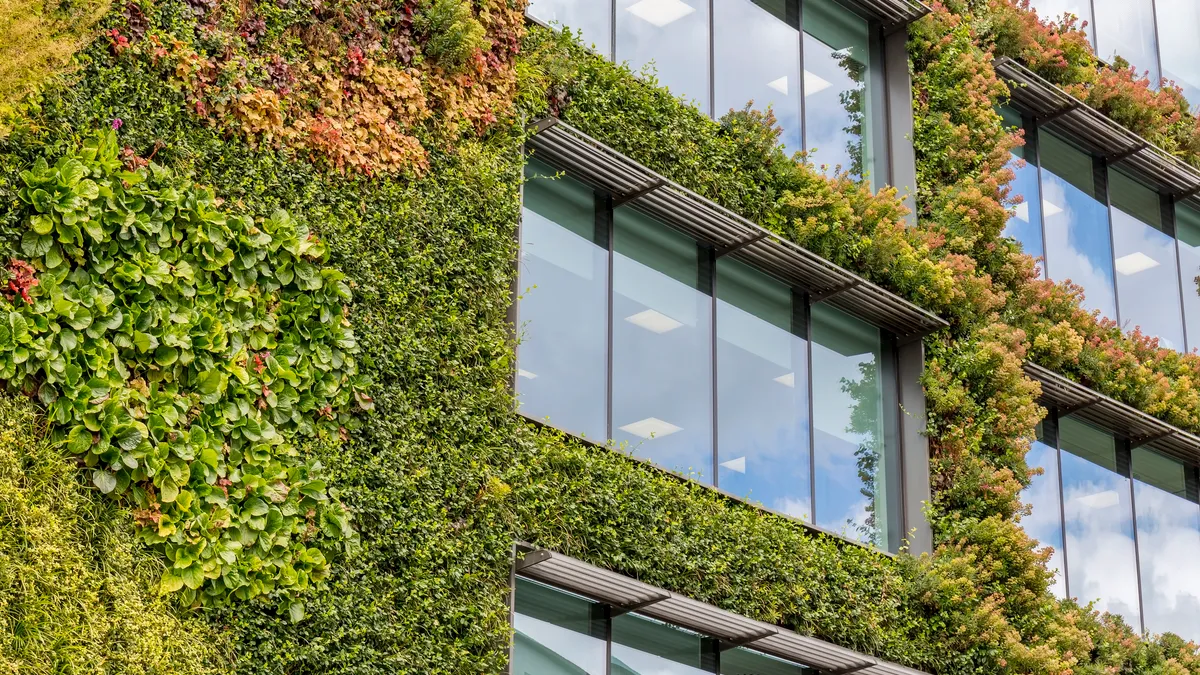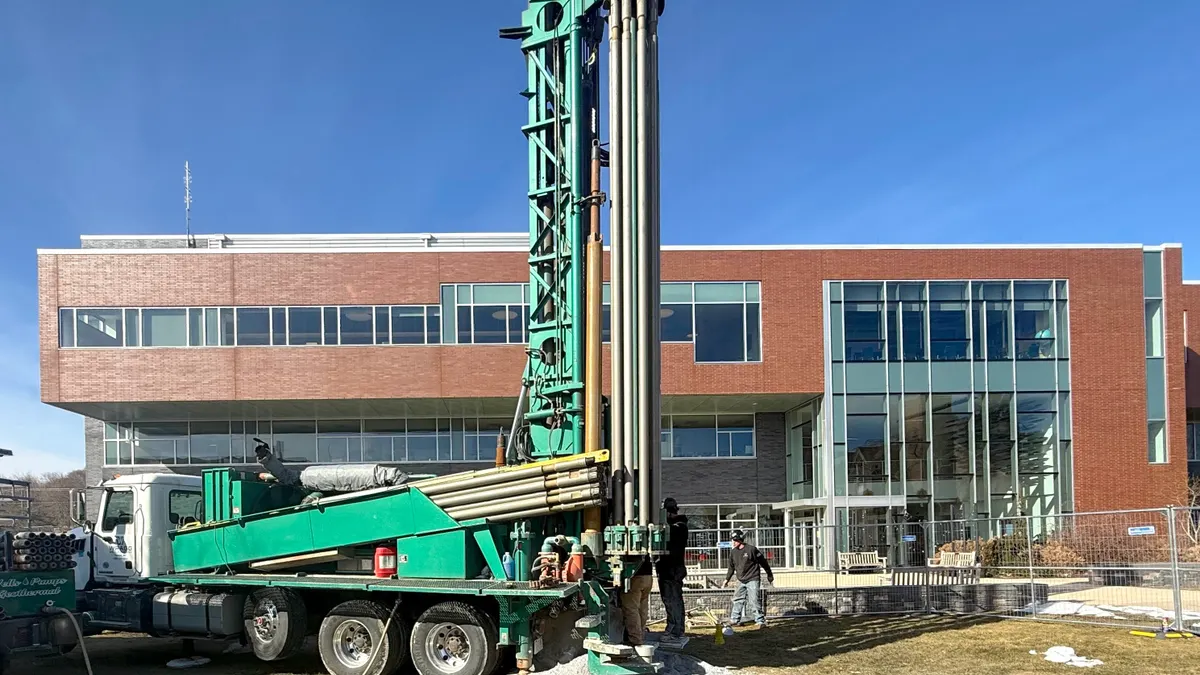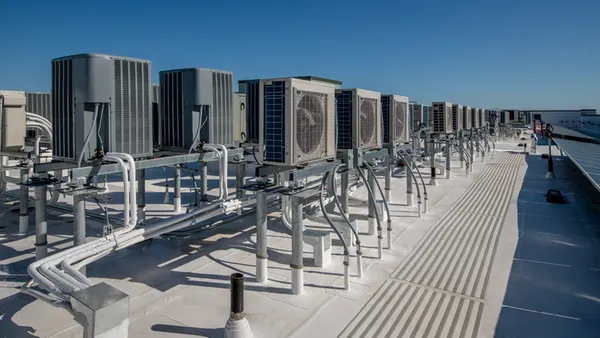The gap between the green-focused space occupiers want and the inventory that’s available is widening as buildings age and new construction pipelines tighten, according to a report by JLL. That provides an opening for building operators to collaborate with tenants on retrofits that meet their needs, the firm says.
Retrofitting is now a critical lever for owners to preserve and enhance the value of their buildings by making energy efficiency improvements, the firm says in its report, “Value creation through energy-smart, low-carbon buildings.” The firm says owners can generate revenue premiums of 25% to 50% through those kinds of improvements. But so far, “action hasn’t met the moment,” says Paulina Torres, global research director of sustainability at JLL, who authored the report.
Retrofitting rates need to accelerate by a factor of five to reach net-zero targets, she says.
“It's an immense opportunity, and there's also an immense opportunity to scale because of the lack of action so far,” Torres said in an interview. To expedite the process, there needs to be better awareness of how much work needs to be done in buildings, the benefits of retrofits and a sufficient technical knowledge base to tackle existing buildings at scale, she said.
But, “awareness around performance is happening,” she said.
One of the most impactful factors driving improved retrofit awareness is tenant demand. JLL estimates that 75% of future office and 65% of future industrial and logistics space requirements from top occupiers will be tied to corporate carbon reduction targets.
As tenants work to optimize their operations with smaller, more efficient portfolios and lower energy spending, they’re willing to pay a premium for buildings that deliver long-term performance, Torres said.
“Because tenants have these corporate-level targets that they have to meet, those corporate-level targets are trickling down to their real estate decisions and they’re starting to understand specific energy intensity targets that they need to have for the spaces that they choose,” she said.
This means that sustainability is no longer an add-on, but a core component of how tenants perceive and value premium space. “Energy efficiency and carbon performance [have become] essential selection criteria alongside traditional amenities,” JLL says in the report.
Because there are too few buildings available to provide tenants with the space they want, occupiers are starting to come to the table looking for a co-investment approach, where both tenants and landlords put money on the table to make environmental improvements in shared spaces, Torres said. “And that always comes through in the lease [terms],” she said.
“For example, there was a case of a tenant whose lease was coming up,” she said. “They agreed with the landlord that they would renew on the condition that the landlord would remove the gas systems in the building. It was a desirable tenant. They agreed to stay and had a break clause. If the landlord didn’t meet their timing to remove that gas system, they would be able to leave without violating any lease terms.”
Sustainability-focused elements, like work towards electrifying systems, retrofitting more energy efficiency systems and adding on-site renewables and storage, are being incorporated into lease terms in a targeted way, according to Torres. This is helping to bring greater clarity to the market, with priorities around energy and carbon performance in buildings driving occupiers to get smarter about what leases have to include in lease arrangements, she said.
“This co-investment thing is really the solution for existing buildings,” Torres said. “We know there's a way to add value [to a building], and a key way to do that is for both parties to come together. In a way that sounds nice, but also in the monetary and financial way where they're both putting money where their mouth is.”











